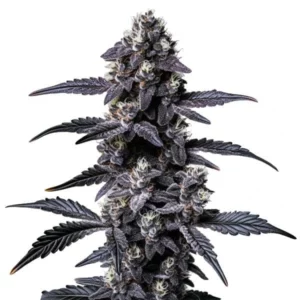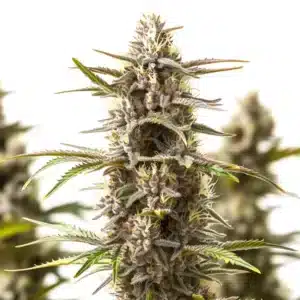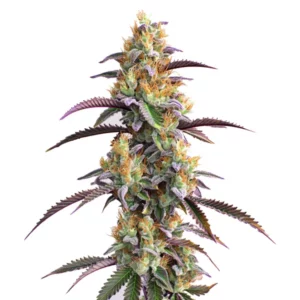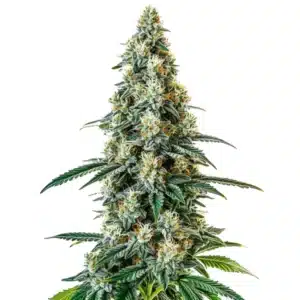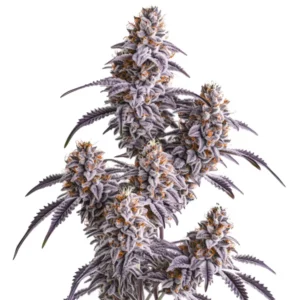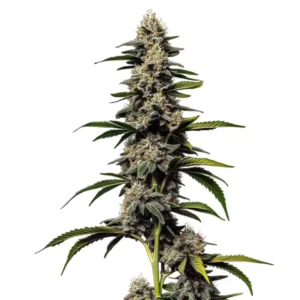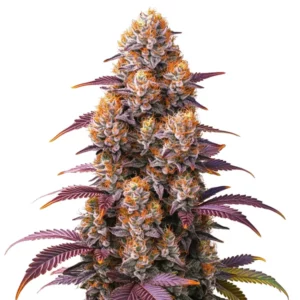
Cannabis Companion Plants: Enhancing Your Grow Naturally
Growing cannabis isn’t just about the plant itself. Companion planting is an ancient practice that can significantly benefit your cannabis garden. By strategically planting certain herbs, flowers, and vegetables alongside your cannabis, you can improve soil health, deter pests, and even boost yields. Let’s dive into the world of cannabis companion plants and explore how you can naturally enhance your grow.
Why Use Companion Plants with Cannabis?
These plants play an important function in creating a balanced ecosystem in your garden. By adding certain plants near your cannabis, you can help prevent pests without relying on harsh chemicals, improve the quality of your soil, and even enhance the overall health of your plants. It’s a sustainable, organic way to protect and nurture your cannabis plants.
Recommended Strains
Zoap
|
|
THC | 24% - 26% (High) |
|
|
Type | Feminized |
|
|
Yield | High |
|
|
Phenotype | 50% Indica / 50% Sativa |
RS11 x Zoap
|
|
THC | 20% - 24% (Medium) |
|
|
Type | Feminized |
|
|
Yield | Medium |
|
|
Phenotype | 60% Indica / 40% Sativa |
For new growers, the idea of companion planting may seem confusing. What plants work best? How do you plant them? Let’s start with why this method is so beneficial.
Promos & Deals
Boosting Soil Health Naturally
Healthy soil is the foundation of any successful cannabis grow. When your soil is thriving with nutrients, it directly impacts the growth, health, and yield of your cannabis. Plants like clover and alfalfa are natural soil conditioners. These plants fix nitrogen into the soil, improving fertility and ensuring your cannabis roots have the nutrients they need to thrive.
If you’ve struggled with keeping your soil balanced, these plants can be an easy solution. Unlike chemical fertilizers, these natural plants work in harmony with the ecosystem of your garden.
Pest Control Without Chemicals
One of the most frustrating aspects of growing cannabis is dealing with pests. Companion plants act as natural pest repellents, keeping harmful insects away from your cannabis without the need for harmful pesticides. Plants like marigold and lavender give off scents that deter aphids and spider mites, common pests that can wreak havoc on your cannabis crop.
If you’re tired of battling pests in your garden, companion planting offers an organic, low-maintenance way to manage them. This reduces your dependency on chemicals that could harm your plants and the environment.
Companion Plants That Improve Cannabis Growth
Now that you know why companion plants are beneficial, let’s take a closer look at the specific plants that work best alongside cannabis. Each companion plant offers unique advantages, from pest control to soil enrichment.

Marigolds: A Natural Pest Barrier
Marigolds are a favorite among cannabis growers for their pest-repelling properties. These vibrant flowers emit a scent that repels aphids, whiteflies, and even nematodes, which can damage cannabis roots. Planting marigolds around your cannabis garden creates a natural barrier against unwanted pests.
For growers who want to avoid using chemicals, marigolds are an excellent option. They’re easy to grow and require minimal maintenance while providing continuous protection for your cannabis plants.
Basil: Improving Flavor and Repelling Insects
Basil not only repels pests like mosquitoes and flies, but it can also improve the flavor profile of your cannabis plants. The aroma of basil is believed to enhance the terpenes in cannabis, making the buds more flavorful. Additionally, basil’s pest-repelling properties make it a dual-purpose companion plant for cannabis.
If you’re focused on boosting the overall quality of your cannabis, basil can be a game changer. It’s easy to grow, provides multiple benefits, and can easily be incorporated into any garden space.
Clover: Fixing Nitrogen in the Soil
Clover is another companion plant known for its ability to fix nitrogen in the soil. Nitrogen is an essential nutrient for cannabis, and clover naturally adds it to the soil, keeping your plants nourished throughout the growing season. Additionally, clover helps prevent soil erosion, keeping the growing environment stable.
For growers dealing with poor soil quality or those looking to maintain their soil’s fertility, adding clover to the garden is a simple yet effective strategy. It’s a natural, eco-friendly way to improve the overall health of your cannabis plants.
Lavender: A Beautiful Way to Keep Pests Away
Lavender not only adds beauty to your garden but also acts as a powerful pest deterrent. The strong scent of lavender repels moths, fleas, and mosquitoes, keeping your cannabis plants safe from unwanted insects. Its soothing aroma can also help create a calming atmosphere around your grow space.
Growers looking for an aesthetic addition to their garden that also protects their plants will love lavender. Its low maintenance needs make it a perfect companion for outdoor cannabis grows.
How to Arrange Companion Plants in Your Cannabis Garden
Choosing the right plants is only half the battle. You also need to arrange them strategically to maximize their benefits. Proper placement ensures that each companion plant can do its job effectively, whether it’s repelling pests or improving soil quality.
Start by planting these plants around the perimeter of your cannabis garden. This creates a natural barrier against pests. For soil-enhancing plants like clover, plant them between or around your cannabis plants to ensure their roots receive the necessary nutrients.
Timing Is Key for Companion Planting
Planting this plants at the right time is crucial for their effectiveness. For annual plants like basil and marigolds, it’s best to plant them after your cannabis has started growing. Perennial plants like lavender and clover can be planted earlier in the season, giving them time to establish themselves before your cannabis needs their benefits.
If you’re new to companion planting, timing may seem tricky. However, once you get the hang of it, you’ll see how planting at the right time can significantly impact the health and yield of your cannabis.
How to Maintain a Cannabis Companion Garden
Maintaining a cannabis companion garden requires a bit of effort, but the rewards are worth it. Once your plants are established, they require regular watering and occasional pruning, just like your cannabis plants. Keep an eye on their growth to ensure they don’t overcrowd your cannabis plants.
By maintaining your companion garden, you can ensure that the benefits continue throughout the growing season, helping your cannabis plants stay healthy and productive.
Can companion plants really improve cannabis yields?
Yes, companion plants can improve cannabis yields by enhancing soil health and repelling pests, which allows your cannabis plants to focus on growth and bud production.
Do I need to grow companion plants year-round?
Not necessarily. Many companion plants are annuals, meaning they only grow for one season. However, some perennials like lavender can stay in your garden year after year.
Will companion plants compete with my cannabis for nutrients?
If planted correctly, companion plants will complement your cannabis rather than compete. Many companion plants, such as clover, actually add nutrients to the soil.
Can I use companion plants in an indoor cannabis grow?
Yes, you can use certain companion plants indoors, but it may require more planning to ensure adequate space and lighting for both your cannabis and companion plants.
How do I prevent companion plants from overtaking my cannabis garden?
Pruning and regular maintenance will help keep companion plants in check. Be sure to monitor their growth to avoid overcrowding your cannabis plants.
Positioning them between your cannabis plants can also help prevent the spread of
In addition to protecting your cannabis, companion plants boost the overall health of
Explore some of the most popular and effective companion plants for cannabis below. For the best results, start seeds in rockwool to ensure strong, healthy plants.
Best Companion Plants for Cannabis Growing
In nature, these plants can be whatever grows naturally, and many aromatic herbs can serve this purpose. However, some plants are more effective than others. If you’re looking for the best companion plants for cannabis growing, here are the top choices.
This plant produces striking red-pink pom-pom flowers, which attract pollinator species to your garden. For optimal growth, sow seeds in early spring in cooler climates and in autumn in warm in your cannabis garden. Its mild aniseed aroma draws aphids away from your marijuana plants, deterring them from causing harm.
To cultivate, sow chervil seeds directly into nutrient-rich soil as early as March. Expect germination within a week, with seedlings appearing shortly after.
Dill
Belonging to the celery family, dill not only adds visual appeal when planted alongside cannabis but also acts as a natural deterrent against certain caterpillars and spider mites throughout the growing cycle.
Avoid growing incompatible plants alongside your cannabis companions to ensure optimal growth. While companion planting offers numerous benefits, selecting unsuitable companions could adversely impact your cannabis plants.
Companion planting serves as a natural and highly efficient method to enhance soil quality and promote overall cannabis growth. By incorporating complementary plants, such as those adept at enriching soil, deterring pests, or retaining moisture, you can optimize the cultivation process.
Cannabis Companion Plants for Different Growing Environments
Choosing the right companion plants often depends on your growing environment. Whether you’re cultivating cannabis indoors, outdoors, or in a greenhouse, the right combination of plants can provide natural support for your cannabis. Each environment has its own set of challenges, and companion planting can help address them. Knowing how certain plants work together to create a healthier, more sustainable grow can take your cannabis cultivation to the next level.
Different environments present specific needs. Indoor cannabis grows might focus on air quality and pest control, while outdoor gardens may need help combating larger pests and improving soil health. These plants act as natural allies in these scenarios. Whether it’s about repelling harmful insects, enriching the soil, or boosting plant resilience, companion planting offers an organic way to protect and enhance cannabis without the need for synthetic solutions.
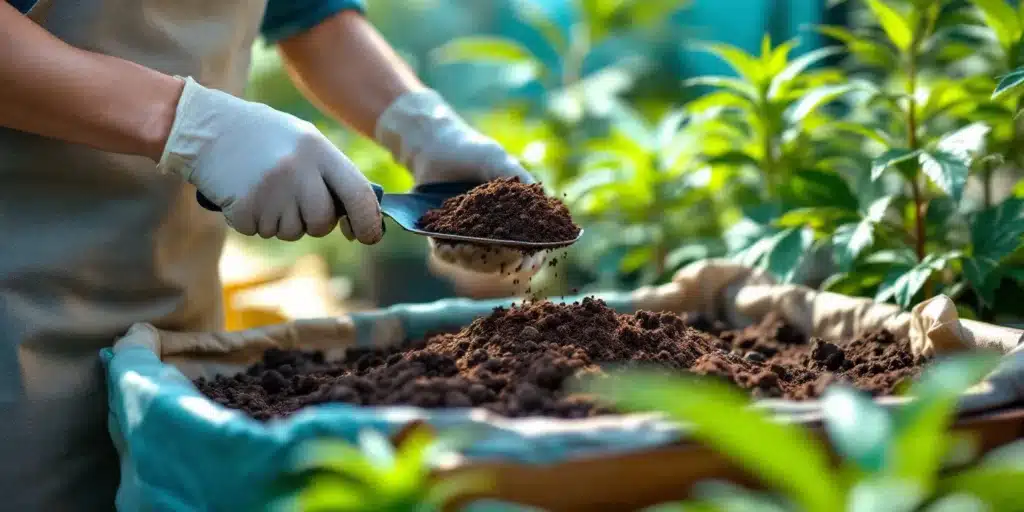
Indoor Cannabis Grows
Indoor cannabis grows benefit from companion plants that don’t take up too much space but still offer significant advantages. Herbs like basil and cilantro are ideal for indoor environments as they don’t need a lot of light and help repel indoor pests. For those growing in small spaces, low-maintenance plants like thyme can improve air quality and keep pests at bay. Indoor growers often face space constraints, and plants with similar light and water requirements can fit seamlessly into the grow room without hindering the cannabis plants’ growth.
Additionally, indoor growers might not face the same pest challenges as outdoor growers, but these plants can still be beneficial by improving air quality and providing a more natural, balanced ecosystem for your cannabis plants to thrive in. With the right combination of herbs or small plants, the air circulation can improve, leading to healthier cannabis plants with reduced mold risks.
Outdoor Cannabis Grows
Outdoor cannabis gardens offer a wider range of options when it comes to companion planting. In an outdoor setting, you can grow larger plants like sunflowers, which attract beneficial insects while offering shade to your cannabis plants. Dill and yarrow are excellent for attracting predatory insects that feast on pests, helping to keep your cannabis pest-free. Outdoors, companion planting plays a critical role in maintaining biodiversity, which creates a more stable and self-sustaining growing environment.
If you grow cannabis outdoors, using these plants strategically will help you make the most of natural resources like sunlight and rainfall while minimizing the need for chemical pesticides. Additionally, plants like comfrey can help improve soil structure and nutrient availability, leading to bigger and healthier cannabis plants.
Companion Plants for Greenhouse Cannabis Grows
Greenhouses create a controlled environment, and companion plants can enhance that environment by improving air circulation and soil health. Lavender and rosemary, for example, thrive in greenhouse conditions while offering natural pest control. Mint can also be a great greenhouse companion plant, as its strong scent deters pests without taking up too much space. These plants in greenhouses can also help manage humidity levels, providing balance to the enclosed ecosystem.
Greenhouse cannabis growers can use companion planting to balance humidity and airflow, two key factors that impact the health of cannabis in an enclosed space. For example, aromatic herbs like thyme and basil can help reduce mold risks, while nitrogen-fixing plants like clover can improve the nutrient content of the soil without relying on synthetic fertilizers.
Maximizing the Benefits of Cannabis Companion Plants
For many growers, the goal of companion planting is to create a self-sustaining ecosystem where cannabis and companion plants support one another. Maximizing these benefits requires ongoing attention and care. Here’s how you can make the most of your companion planting efforts. By choosing plants that complement your cannabis and offer natural support, you can reduce your reliance on artificial inputs like fertilizers and pesticides.
As the growing season progresses, you’ll notice the positive impact companion plants can have on your cannabis garden. These plants not only deter pests but also boost soil health, improve airflow, and contribute to a more balanced and healthier growing environment. The best plants work symbiotically, enhancing the overall quality and yield of your cannabis plants.
Boosting Yields Through Companion Planting
While companion planting can enhance cannabis growth, it can also increase yields. Plants like chamomile improve the flavor and resin production of cannabis, while legumes like beans can fix nitrogen in the soil, leading to stronger, healthier cannabis plants with higher yields. The addition of companion plants can create a healthier environment where cannabis plants grow more vigorously and produce denser buds.
For growers focused on increasing their yield without using synthetic fertilizers, these plants offer a natural, eco-friendly solution that’s easy to implement. By fostering a nutrient-rich, pest-resistant environment, these plants allow cannabis growers to cultivate bigger, more resinous buds. Over time, you’ll notice that healthy soil and beneficial insects contribute to a higher-quality harvest.
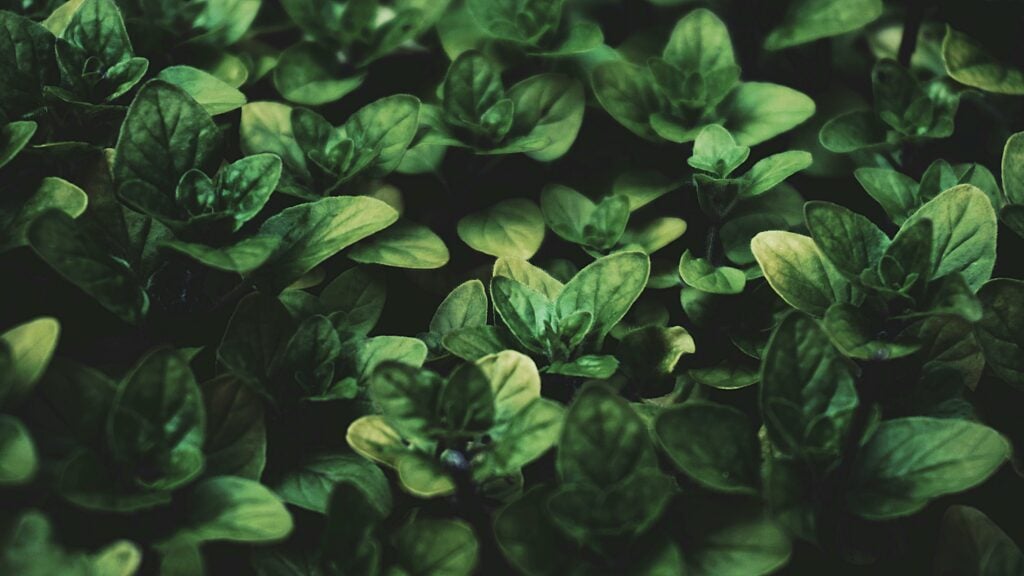
Improving Cannabis Quality with These Plants
Plants like basil and dill can enhance the terpene profile of your cannabis, making it more aromatic and flavorful. These plants not only repel pests but also boost the quality of your cannabis buds. The added aromatic compounds can make the final product more desirable, whether for personal use or sale. Companion plants that contribute to healthier cannabis plants will naturally improve the quality of the final product.
If you’re looking to grow high-quality cannabis, these plants can be your secret weapon. Their natural benefits help you produce cannabis that stands out for its potency and flavor. Over time, incorporating these plants into your grow can help you create a thriving, self-sustaining garden that improves both yield and bud quality.
How to Troubleshoot Companion Planting Issues
Even though companion planting is a natural and beneficial process, it’s not without challenges. Some plants may grow too aggressively or compete with your cannabis for resources, while others may attract pests instead of repelling them. Learning how to troubleshoot these issues ensures that your companion planting efforts are successful. Regular observation and adjustment are key to preventing common companion planting challenges.
If a particular companion plant isn’t thriving or seems to be causing more harm than good, it may be time to reevaluate your choices. Companion planting requires ongoing care and attention, but the results can be rewarding. It’s all about creating balance and synergy between your cannabis plants and their companions.
Preventing Overgrowth of Companion Plants
One of the most common issues with companion planting is overgrowth. Plants like mint, for example, can spread quickly and overtake your cannabis garden if left unchecked. Regular pruning and careful placement of these plants can prevent this problem. Be sure to monitor your plants regularly to ensure that no single plant dominates your garden. Keeping plants well-maintained ensures they don’t compete with your cannabis for nutrients and space.
By using barriers or choosing less aggressive plants, you can manage overgrowth effectively. This allows your cannabis to thrive alongside beneficial plants without overcrowding. Regular upkeep of your companion plants will result in a balanced garden where each plant has its role in supporting cannabis growth.
Addressing Unintended Pest Attraction
While many repel pests, some may inadvertently attract unwanted insects. For example, flowering plants can bring in pollinators, which could also attract pests. If this happens, you may need to adjust your companion planting strategy or incorporate additional pest-repelling plants to balance the ecosystem. It’s crucial to assess how each plant contributes to the overall health of the garden and make changes as necessary.
FAQs About Cannabis Companion Plants
Can I use these plants in a hydroponic cannabis grow?
While traditional soil-based companion planting is more common, some hydroponic systems can incorporate smaller plants like herbs. The key is ensuring that all plants have access to the right nutrients and water levels. Hydroponic systems often require careful monitoring, but small plants can still offer benefits like pest control and air quality improvement.
How do I choose the right companion plants for my specific cannabis strain?
The best companion plants depend on your growing environment and the needs of your cannabis strain. For example, if you’re growing a mold-resistant strain, you might prioritize plants that enhance soil health over those that repel pests. Different strains thrive under different conditions, and these plants should be selected based on what will support those specific needs.
Do companion plants affect the flavor or potency of my cannabis?
Yes, certain plants can improve the flavor and terpene profile of your cannabis. Herbs like basil and chamomile are known to enhance the aromatic compounds in cannabis, leading to a more flavorful end product. This can be especially important for growers looking to boost the overall quality of their cannabis.
Are there any companion plants to avoid when growing cannabis?
Some plants, like certain types of mint, can spread aggressively and compete with your cannabis for nutrients. Avoid plants that grow too quickly or dominate the garden space. Also, stay away from plants that attract pests. Choose plants that will enhance rather than hinder cannabis growth.
How do I know when my companion plants are ready to harvest?
Most of these plants have different growing cycles than cannabis. Herbs like basil and lavender can be harvested throughout the growing season, while others, like clover, should be left to enhance soil health for the entire season. It’s important to be mindful of each plant’s unique growing cycle to make the most of your companion planting efforts.


